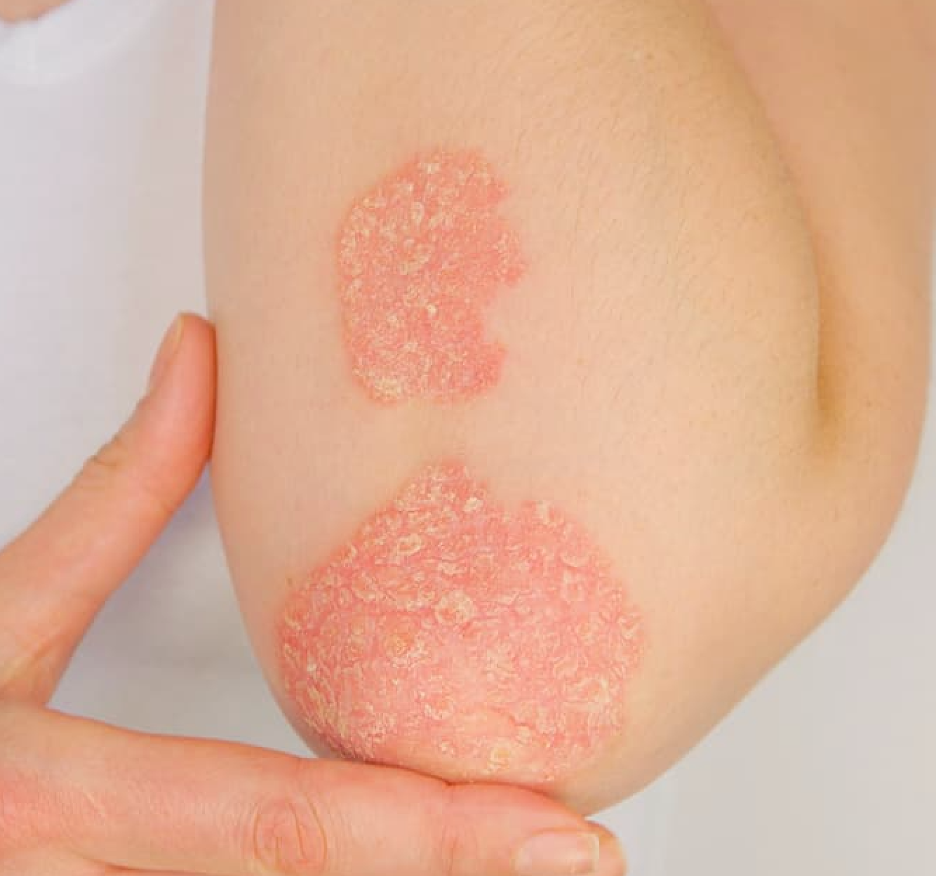News
Article
Updates to Guidelines Announced for Management of Atopic Dermatitis
Author(s):
These updated guidelines by the AAAAI and ACAAI Joint Task Force incorporate additional research regarding treatment options for eczema.
Credit: Pexels

Advancements in treatment options for atopic dermatitis, emphasis on the Grading of Recommendations Assessment, Development, and Evaluation (GRADE) approach to recommendations, and an anti-elimination diet stance were among the main updates to guidelines by the American Academy of Allergy, Asthma, and Immunology (AAAAI) along with the American College of Allergy, Asthma, and Immunology (ACAAI) Joint Task Force (JTF).1,2
The new atopic dermatitis guideline updates also included recommendations such as allergen immunotherapy for individuals with moderate to severe disease as well as updated systemic treatment recommendations. These new additions were each included in the AAAAI/ACAAI guideline updates on the skin disease, commonly referred to as eczema.
Eczema—which is known to impact about 13% of children and can be linked to allergic and nonallergic comorbidities and other issues—was considered a necessary condition to highlight by the panelists featured in the joint task force. The update summary explored here was authored by a team led by Kathryn E. Wheeler, MD, of the department of pediatrics at the University of Florida, Gainesville.
“The JTF AD guideline panel included patients, caregivers, primary care physicians, AD experts (allergy-immunology, dermatology), and allied health professionals (nursing, psychology, pharmacy),” Wheeler et al. wrote. “The panel used the GRADE approach to produce evidence-based recommendations and fulfilled Institute of Medicine criteria for trustworthy guidelines.”1
Guideline Updates
Following their utilization of the GRADE methodology, the task force panelists implemented systematic reviews as well as meta-analyses. The team also looked into the values of atopic dermatitis patients and their preferences, assessing each recommended therapy’s costs and placing special focus on accessibility, diversity, equity, inclusion, and care disparities.
In terms of good clinical practice, the major recommendation involved the verifying of correct diagnoses and the identification of complicating diagnoses prior to initiation of new eczema treatments. Patient education using an information guide and plan of action, with emphasis on trigger avoidance and moisturizer use, were highlighted by the panelists.
The addition of dilute bleach baths to topical treatments were encouraged by the panelists, given that they provide modest improvement to patients’ symptoms and minimal levels of harm. Dilute bleach baths are not, however, suggested for those with moderate to severe AD, given explicit written instructions, and are not recommended for mild AD.
The ACAAI/AAAAI urged against the recommendation of food elimination diets in treating atopic dermatitis, with or without allergy blood or skin testing, given the minimal improvements and increased risks. The team cited the risk increases of infants and young children developing IgE-mediated food allergies following prolonged avoidance of different foods.
The team also encouraged clinicians to caution patients against the use of prescription moisturizers given the availability of over-the-counter, generic moisturizers which are equally effective and known to be more affordable and accessible in general. Instances in which moisturizer alone cannot help control atopic dermatitis were highlighted as instances where topical anti-inflammatory options may be needed.
Utilization of topical corticosteroids (TCS) or topical calcineurin inhibitors (TCI) were recommended in the guideline updates as well, depending on prior therapies, accessibility, application sites, and patient preferences. The updates urged against use of high-potency TCS for more than 4 consecutive weeks, with panelists noting use limits to patients’ face and skin folds.
Other update examples include TCIs (pimecrolimus or tacrolimus) which the team noted as helpful for individuals known to be older than 3 months. They also spoke to the prior warning given regarding TCIs, noting that newer evidence suggests that using TCIs regularly will not increase risk of developing cancer.
The ACAAI/AAAAI panelists encouraged the application of topical PDE4 inhibitor crisaborole for patients who hope to avoid the use of TCS or TCI. Implementation of the topical JAK inhibitor ruxolitinib as a first-line therapy was discouraged by the team among adolescents and adults with mild to moderate eczema given modest benefits and uncertain risks given a lack of long-term randomized controlled trials.
Allergen immunotherapy was encouraged by the panelists in managing those with moderate to severe eczema as well as other allergies such as allergic rhinitis, given that patients may see benefits. The team further highlighted recent improvements to biologic options in patient-reported outcomes, noting the lack of major increases in reports of adverse events.
The panelists included a recommendation of dupilumab addition for management of those aged 6 months or older and tralokinumab for those aged 12 years and older who are refractory or not able to implement mid- to high-potency topical treatment options. The team encouraged use of oral JAK inhibitors for those who are either refractory to or unable to utilize topicals and other systemic options.
The ACAAI/AAAAI guideline updates also indicated variation in eczema patient age and regulatory approval, citing upadacitinib and abrocitinib’s approvals for those aged 12 years and older in the US and Canada and baricitinib’s lack of approval for eczema within North America and approval in Europe for those aged 2 years and older.
In light of the US Food and Drug Administration (FDA) boxed warning on JAK inhibitors, the panelists commented that the warning was due to increased serious harms seen within a clinical trial of adult rheumatoid arthritis patients who received tofacitinib therapy. While such harms were not found in shorter studies (up to 16 weeks), risks were noted by the team important to discuss with each patient and monitored.
The team advised clinicians against using systemic corticosteroids, given their short-lived symptom reductions. They also highlighted patients’ frequent rebound flares upon discontinuation of treatment use and the harms with recurrent or chronic utilization.
Overall, shared decision-making and inclusion of informative supplemental materials for patients and caregivers were encouraged by the panelists on the task force. For additional information, view the guideline update page.
References
- Wheeler KE, Chu DK, Schneider L. Updated Guidelines for Atopic Dermatitis—AAAAI/ACAAI Joint Task Force. JAMA Pediatr. Published online July 08, 2024. doi:10.1001/jamapediatrics.2024.1395.
- Chu DK, Chu AWL, Rayner DG, et al. Topical treatments for atopic dermatitis (eczema). J Allergy Clin Immunol. 2023;152(6):1493-1519. doi:10.1016/j.jaci.2023.08.030.





